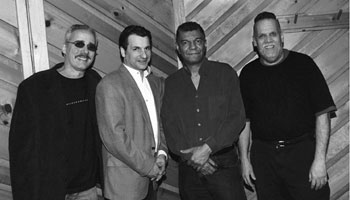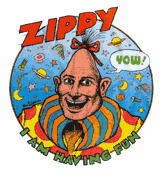

|
Soundclip:
|
| See Steve's Hand-Written Lead
Sheet |
|
Steve
Khan's
lead
sheet : I can't even begin to recall how many times I wrote and rewrote the melody to this tune. As usual, I came close to giving-up on it. But, eventually it seemed to settle into something that made some singable sense to me and so I just went with it. Basically, the chordal structure used is painfully similar to "Tyrone" but in bars 21-24 of [A], we have a little harmonic surprise and after having descended from G7 to F7, we land on a wide-open Emaj7(9/6) chord before using a G7(alt.) to turn us back to the top and C7. For the solo form, which appears at [B], the last 4 bars employs a slightly different method to get back to C7. Here we have two bars of Emaj7 chord, and then a bar each of Abm7/Db and Db7. The last two bars are really just suspended way of treating a b5 substitute for the real V7 chord or G7. 
As he does throughout the recording, John Patitucci plays musically and brilliantly, with contributions that are often so solid and simple one could overlook them. But, not me! No one appreciated his work more than me during those two days of recording. For his part, Manolo Badrena was no less great, especially if you pay attention to all the accents he caught with such great subtlety on the bongos during the last 12-bars of [A]. And, of course, there is always the way that he listens to the soloist and comments on what he hears, often times in a most comical way. Oh, and speaking of comedy, with his latest haircut and style, doesn't Manolo look a bit like "Zippy the Pinhead" now? Of course, by the time you are reading this, his look will have already changed 10 times!!! When one is fortunate enough to have a great drummer like Jack DeJohnette present, I think one owes it to him, and to the music, to come-up with interesting formats over which he can solo.  And so, I chose to extend the sense of harmony that was established in the [I] section, and this became letter [C] for Jack's solo. It worked out that he plays over a 24-bar format too, just with his own set of changes. It's fascinating how you can hear him shaping the chordal movements as each change arrives. It's hard to imagine a more musical drummer. However, the key to getting into letter [C] would be that John would have to give me a cue when he was about to begin what would be his last chorus. This was essential because as you will see, on Pg. 2 of the lead sheet, there is a Coda sign which replaces the last 4 bars of that chorus and shoots us immediately into Jack's solo. All that remains is for Jack to guide us back to the last statement of [A], which he did masterfully. And so, I chose to extend the sense of harmony that was established in the [I] section, and this became letter [C] for Jack's solo. It worked out that he plays over a 24-bar format too, just with his own set of changes. It's fascinating how you can hear him shaping the chordal movements as each change arrives. It's hard to imagine a more musical drummer. However, the key to getting into letter [C] would be that John would have to give me a cue when he was about to begin what would be his last chorus. This was essential because as you will see, on Pg. 2 of the lead sheet, there is a Coda sign which replaces the last 4 bars of that chorus and shoots us immediately into Jack's solo. All that remains is for Jack to guide us back to the last statement of [A], which he did masterfully.One thing I tried to work hard at during my preparations for the rehearsal and recording was to write endings for as many tunes as was possible. There are times when a "fade" is just the right thing, because it can an air of mystery to the musical story which had just unfolded. Most times, fades are intended to make the listener want to hear more, or to ask: "I wonder what happened after that?" In other cases, sometimes it is just laziness or expediency which leads to fades and, as the years have come and gone, that is no longer an acceptable reason. So, after some work, I came-up with an ending for this tune which, in its own way, utilizes rhythmic ideas that appear in the melody. To get to the ending, I had to employ a Double Coda after bar 20 of [A] to take us to the Tag. What made me feel good is that both Jack and John seemed to enjoy all the various endings, and that was enough for me! Harmonically speaking, it's a nice touch that the last chord is actually a Gsus voicing, with no 7th. It is still the V chord of the tune, but there is no need to resolve it, the sense of resolution, finality, is complete. Regarding the title, I've always liked this expression, "fist in glove." As I know it, it usually refers to lawyers, and their slick ability to be "tough" on certain issues of contention, but, that very same "toughness" is disguised in a most gentlemanly and civilized manner of presentation. Hence, the image of a "fist" well-hidden inside a very soft leather "glove." Of course, when reading this expression, if one isn't careful, as one of our assistant engineers was not, the title can come out as "first in love." Obviously, they were not referring to me!!! The presentation of this tune coincides with actual release date of the CD in both the U.S. and Europe. This is always an exciting time, because one never knows just how any particular recording is going to be received. However, one can always have hopes, though guarded hopes at best. I am hoping that those who have the chance to hear the music will enjoy it, and that the music will stay them for a long time.
[Photo: Steve, John Patitucci, Jack DeJohnette, and Manolo Badrena
@ Avatar Studio 'A', May 23rd, 2005 Photo by: Richard Laird] |